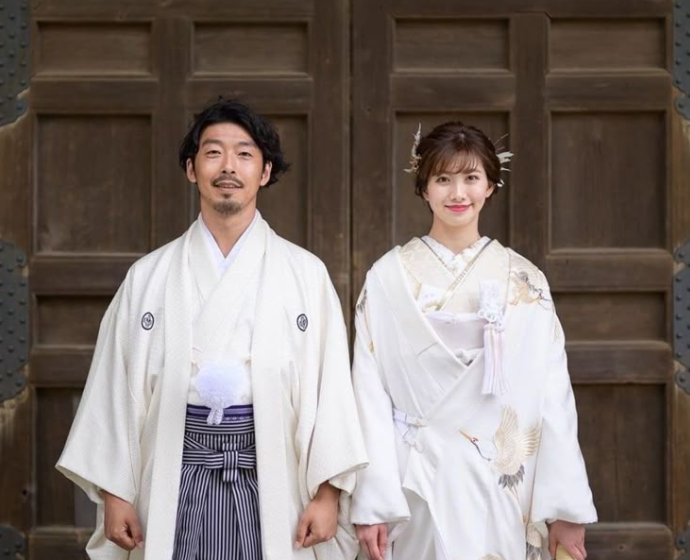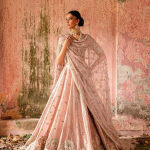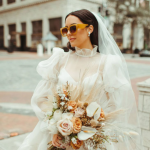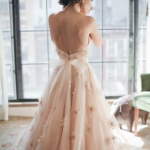A wedding is a momentous occasion that marks a significant chapter in every bride’s journey. Amidst the myriad of cultures around the globe, traditional Japanese wedding attire holds a distinctive allure. These garments are more than mere clothing; they represent a rich tapestry of artistry, deep-rooted traditions, and timeless aesthetics that have been cherished over generations. This guide will explore the fascinating history, cultural relevance, and contemporary trends surrounding Japanese bridal fashion, along with practical advice for brides in the UK on selecting, styling, and acquiring the perfect dress.
Cultural Heritage and Importance of Traditional Japanese Wedding Attire
Japanese heritage is renowned worldwide for its harmony, subtle sophistication, and deep reverence toward ancient customs. At the heart of this cultural tapestry stands the timeless beauty of the classic Japanese bridal attire. Inspired by the graceful silhouette of the kimono—a garment intricately woven into the fabric of Japan’s daily life through generations—these wedding gowns transcend mere aesthetics. Each intricate embellishment and delicate threadwork carries heartfelt symbolism, encapsulating wishes for joy, lasting love, and fortune. More than just a garment, this ceremonial attire highlights the bride’s deep ties to her cultural roots and her commitment to honor ancestral traditions on her special day.
What Sets Japanese Bridal Fashion Apart?
What makes Japanese wedding attire exceptional is its ability to blend age-old traditions with modern design elements. Unlike Western wedding gowns that predominantly feature white hues, Japanese wedding dresses showcase a vibrant spectrum of colors, intricate patterns, and distinctive textile structures. Every aspect is thoughtfully designed to create a cohesive, elegant appearance that reflects the bride’s personality. This fusion of ancient customs with contemporary aesthetics renders the traditional Japanese wedding dress a compelling choice for many brides today.
Historical and Cultural Insights
The Timeline and Transformation of Japanese Bridal Attire
The origins of the traditional Japanese wedding dress trace back several centuries. Initially, kimonos served not only as everyday apparel but also as indicators of social status and cultural identity. With time, wedding kimonos evolved, adorned with exquisite decorative details such as intricate embroidery and the use of luxurious threads, thus becoming treasured pieces. This evolution underscores how Japanese culture has succeeded in maintaining its core values while inviting fresh fashion influences. Brides choosing traditional wedding attire often aim to intertwine historical elements with modern flair.
Meanings and Traditions in Japanese Weddings
Each component of a Japanese wedding dress is laden with symbolism. Colors, designs, and the manner of wearing the kimono carry specific connotations. For instance, white symbolizes purity and new beginnings, while vibrant accents represent joy and success. The ceremonial customs accompanying the wedding deeply involve the bride’s attire, serving to uphold cultural heritage and convey family and spiritual values.
Trends in Design and Style
Contrasting Traditional and Modern Takes
The contemporary wedding fashion landscape embraces both traditional styles and innovative interpretations of the Japanese wedding dress. Classic designs are known for their elaborate embroidery, intricate motifs, and lavish embellishments, capturing the essence of age-old traditions and making a grand statement in formal ceremonies. In contrast, modern styles often favor simpler, minimalist designs, utilizing lighter fabrics while incorporating traditional elements in fresh, contemporary ways. This versatility allows brides to choose a style that resonates with their personal tastes and the overarching theme of their celebration.
Materials, Colors, and Decorative Elements
The fabrics used in traditional Japanese wedding garments typically include natural materials like silk and cotton, imparting a delicate and airy quality to the dress. The color palette spans from timeless white to soft pastels punctuated with vibrant touches. Gold and silver threads are commonly used for decorative embroidery and appliqués, adding not only visual appeal but also evoking blessings associated with love, happiness, and prosperity.
Advice for Styling and Personalization
Accessorizing Your Traditional Japanese Wedding Dress
Choosing the right accessories is essential to complete the bridal look. To enhance the elegance of a traditional Japanese wedding dress, consider the following adornments:
- Jewelry: Opt for refined gold or silver pieces that add sophistication without overwhelming the outfit.
- Veils and Headpieces: A delicate veil with understated embroidery or a headpiece embellished with crystals can offer a romantic finishing touch.
- Footwear and Handbags: Classic shoes that complement the dress design, along with a stylish clutch, will tie your entire ensemble together beautifully.
With the right combination of traditional elements and modern sensibilities, brides can create a stunning appearance that honors the past while embracing a contemporary vision.



